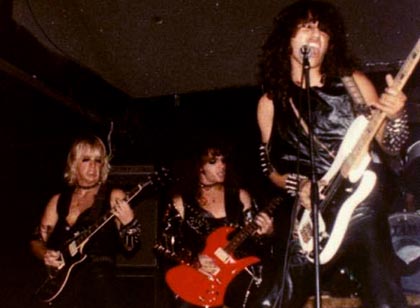The two albums discussed here are very similar in one crucial way: both use riffs that are derived from obvious “inherent” musical structures in such a way to appear modifications of an off-the-shelf technique, which muffles the clarity of organic expression the artist is trying to achieve. Of the two, I’m more positively disposed to the Beithíoch because it is less self-consciously aware of its audience, but is still too self-conscious regarding itself. The end result in both is like seeing someone put up a bone-normal scaffold, and then strategically paint it random colors or alter its shape; you can still discern the underlying shape, so it does not appear to have a genesis of its own, but be a conscious alteration of a normal format for some demonstrative purpose. In the Beithíoch it is acceptable because this band is attempting to stretch itself past its previous tendency to make wallpaper music, which cycled in the background but achieved no direction. Blut Aus Nord should know better.

Beithíoch – Dúchas
A music reviewer can have no friends. He cannot allow any personal motivations or feelings to get in the way. If he likes you, or you just stole his girlfriend and he hates you, he has to separate your album from you and judge it on its artistic merits, with an eye not for casting aside so much as pulling out whatever of value is there. As said above, Beithíoch resembles scaffolding that has been strategically modified to game your brain into thinking you see a different shape. It is boxy. However, when it waxes ambient, it does well, both in the keyboardy/distortiony parts and in the use of King Crimson-esque lead picked chord progressions and high speed noodling. Like earlier Beithíoch, this one has a crisis of knowing what the songs are about. This one-man band has just about nailed his technique, including song development and epic-feeling conclusions, but the parts don’t all connect up and so the boxiness hits us in the face. Much like myself, often he needs to de-cerebralize and just let fly with some feeling and if it comes out as three notes and someone chanting “Watermelon Penis Bouffant Christ,” that’s OK too. There’s a lot of promise here but it’s like a vocabulary in search of a topic.

Blut Aus Nord – 777 – The Desanctification
Thematically this is a near remake of Abyssic Hate’s much-celebrated and immediately forgotten 2000 album “Suicidal Emotions” and will be forgotten for much the same reason: it is a manipulation of surface attributes without any underlying direction, narrative or structure. The result is that you become immersed in a particular mood, and then it stops. Each song is like a fragment of a painting, enough to pick up on one mood that is in common between all of these songs, but not enough to figure out the story or where it fits in. In addition, it’s “boxy” in the sense of using archetypes with slight modifications that are designed to game your perception and make you think something new has been created. This is as much deskwork as crafting a memo or making a sales call. The resulting insincere shit is not particularly interesting musically and has nothing to offer otherwise, although it appears to be intense and so fools the same people who are getting fooled by Opeth and Ulver but want something “heavier.” d00d
13 CommentsTags: beithíoch, blut aus nord





